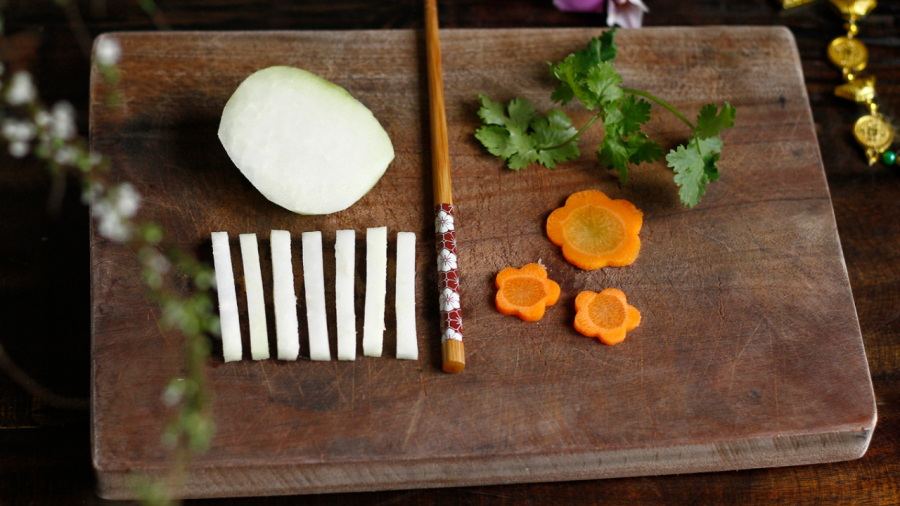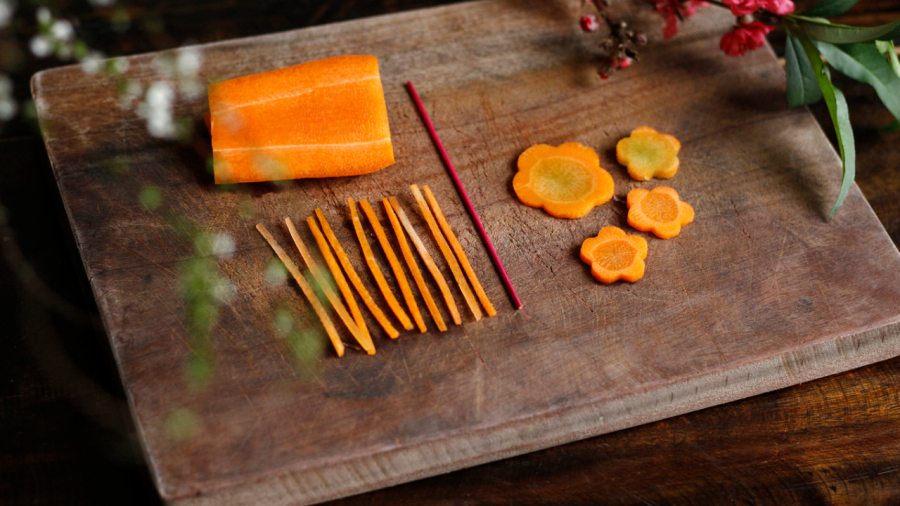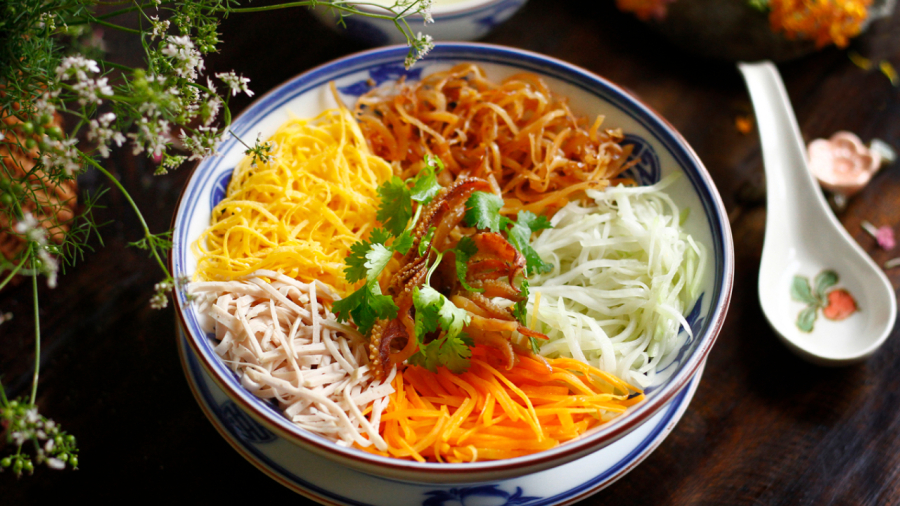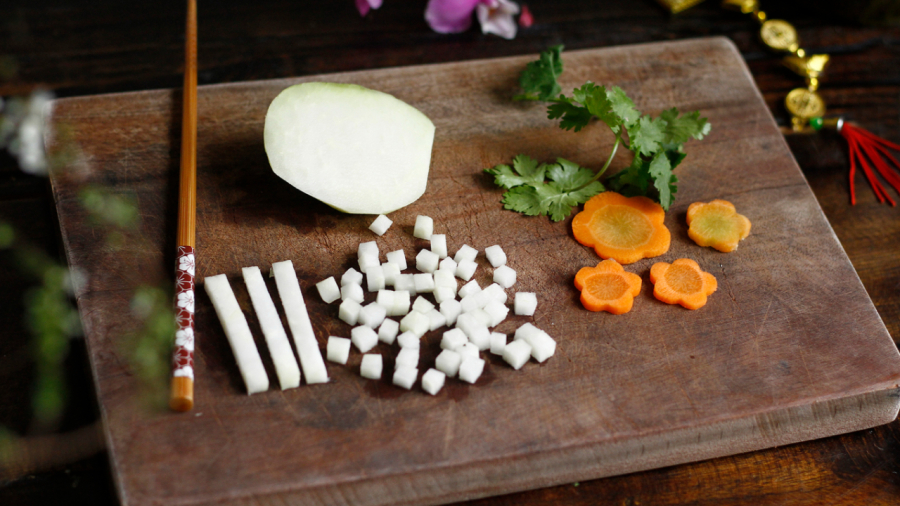Julienne Cut
Often mistaken for mincing food into pencil-thin strips, julienning actually involves cutting food into thin, matchstick-sized pieces. The name “julienne” derives from the French word for pencil shaving.

The term “julienne” comes from the French word for pencil shaving
Instructions: Hold the knife upright and cut the ingredient into 2-3 inch long, ⅛-⅓ inch wide rectangles, then slice into matchstick-sized strips. The julienne cut is commonly used to prepare vegetables for salads, stir-fries, and garnishes.
Batonnet Cut
Batonnet is a French term for a cut that resembles a small rectangular prism, similar to a matchstick but with a square or rectangular cross-section. It is slightly larger than a julienne cut.

Batonnet is a French term for a cut that resembles a small rectangular prism
Instructions: Begin by peeling and squaring the ingredient. Cut into ¼-½ inch cubes, then slice into sticks of the same length and thickness. Use a batonnet cut for vegetables like carrots, celery, and potatoes that will be roasted, sautéed, or deep-fried.
Brunoise Cut
A brunoise cut is a very fine dice, typically ⅛ inch or smaller, used for vegetables and fruits that will be cooked or used as a garnish.

A brunoise cut is a very fine dice, typically ⅛ inch or smaller
Instructions: Start by making a julienne cut. Stack the julienned pieces and slice across them to create small cubes. A brunoise cut is ideal for vegetables like onions, garlic, carrots, and celery that will be used in soups, stews, or sauces.
Chiffonade Cut
The chiffonade cut is a technique used to thinly slice leafy greens and herbs. It produces long, thin ribbons that can be used as a garnish or added to salads, sandwiches, and soups.

The chiffonade cut is a technique used to thinly slice leafy greens and herbs.
Instructions: Wash and dry the leafy greens. Stack the leaves on top of each other and roll them into a tight cylinder. Using a sharp knife, thinly slice the roll crosswise into ribbons. Chiffonade is a great way to prepare herbs like basil, mint, and cilantro.
Dice Cut
A dice cut is a small cube, typically ¼-½ inch in size. It is a versatile cut that can be used for a variety of vegetables, fruits, and meats.

A dice cut is a small cube, typically ¼-½ inch in size
Instructions: Cut the ingredient into slabs, then cut the slabs into strips. Finally, cut the strips into cubes of the desired size. A dice cut is commonly used for vegetables like potatoes, carrots, and onions that will be sautéed, roasted, or added to soups and stews.
Wedge Cut
A wedge cut is a triangular-shaped cut that is typically used for fruits and vegetables. It is also known as a pie cut.

A wedge cut is a triangular-shaped cut that is typically used for fruits and vegetables
Instructions: Cut the ingredient in half from top to bottom. Place one of the halves cut-side down and make parallel cuts to create wedges of the desired thickness. A wedge cut is often used for fruits like apples, oranges, and pears.
Slice Cut
A slice cut is a thin, flat piece that is cut parallel to the length of the ingredient. It is a versatile cut that can be used for a variety of foods, including meat, fish, vegetables, and fruits.

A slice cut is a thin, flat piece that is cut parallel to the length of the ingredient
Instructions: Hold the knife parallel to the cutting board and cut the ingredient into slices of the desired thickness. A slice cut is commonly used for meats like steak and fish, as well as vegetables like cucumbers and tomatoes.






























